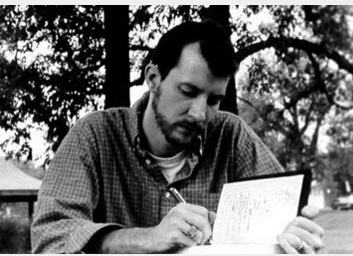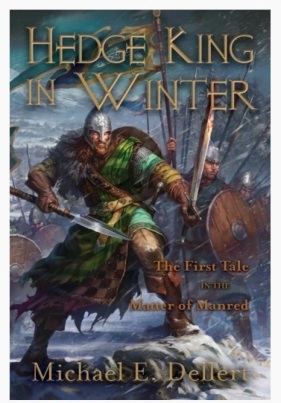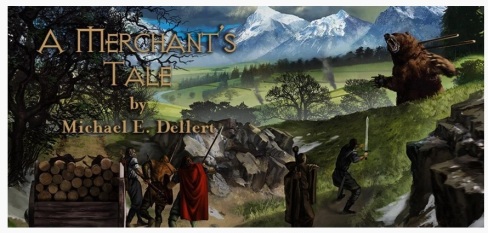
Michael Dellert is an award-winning writer, editor, publishing consultant, and writing coach with a publishing career spanning 18 years. He is currently an independent freelancer living in the Greater New York City area.
His blog offers tips, tricks, and advice to aspiring writers seeking to improve their craft, as well as insights into the current state of the publishing industry.
I recently asked him to share a few helpful insights for us, and he was gracious enough to accept!
Here’s Michael.
.
What makes compelling fiction?

Is it what your character likes to have for breakfast? How they tie their shoes and brush their teeth in the morning?
I’ve met hundreds of writers, as a blogger, as an editor, as a writing coach, and as a student of writing. Many writers start off with the basics when it comes to character development: height, weight, eye and hair color, birthdate, a list of like and dislikes. What they end up with isn’t a story. It’s a dating profile for a fictional character. (Arguably, all dating profiles are about fictional characters. Come on, you know it’s true. But that’s a whole different blog post.)
almost every emerging writer makes the same cardinal mistake: they start boring us with background. They butt in and interrupt characters who are showing us their story
And almost every emerging writer (myself included) makes the same cardinal mistake: Although not a character themselves in their story, they sneak into the story, a place where they don’t belong, and they start boring us ad nauseum with background. They want to butt in and interrupt characters who are masterfully at work showing us their story, and they begin to tell us the story themselves, as authors.
No. A thousand times, no. Writers don’t tell stories. Characters show stories.
Compelling fiction is about what your character wants, how your character goes about getting that thing, and what your character does when she/he realizes that what they want is entirely different from what they need.
Character is Structure
In my #13WeekNovel Writing Challenge, I make the point that every character has a plight, a problem they just can’t solve. The point of the story is not to solve that insoluble problem. The point of the story is to show the characters struggling to solve that insoluble problem. Struggling and, in every way, failing.
 Why? Because that’s life, and that’s something to which we can all relate. We are, all of us, every day, always and already faced with plights to which there are no solutions. We all have debts that no honest man can pay. So, for your characters to be relatable and compelling, they must be faced with just such a plight. There must be a problem that can never be solved. We, as writers, don’t ever try to solve the plight of our stories, because a solution isn’t possible. A plight can only be resolved through a change in perception, an evolution in the character.
Why? Because that’s life, and that’s something to which we can all relate. We are, all of us, every day, always and already faced with plights to which there are no solutions. We all have debts that no honest man can pay. So, for your characters to be relatable and compelling, they must be faced with just such a plight. There must be a problem that can never be solved. We, as writers, don’t ever try to solve the plight of our stories, because a solution isn’t possible. A plight can only be resolved through a change in perception, an evolution in the character.
Characters, like people, are defined by the choices that they make. Unlike people, characters are also a function of your story. This is why character sketches are something of a waste of time. They imply that the characters exist in a vacuum. Human beings aren’t static. They behave situationally, not characteristically. Your story is about exploring the relationships between the characters and their situations.
Structure is not Formula
Formulas are predictable, and therefore to be avoided. People are not predictable, so there should be nothing predictable about a well-told story.
 But that doesn’t mean that a story must be unstructured. The hallmark of skilled writing is the ability to track the beats of a character’s evolution in a compelling and believable way that leads to the resolution (not solution) of the insoluble plight the character faces. And this ability is simply the result of a rigorous inquiry into the nature of that character’s plight, the character’s relationship to it, and a willingness on our part as writers to put our curiosity ahead of the result. Good character development, and therefore good story-telling, results in an evolution of the character’s perspective on his relationship to his plight.
But that doesn’t mean that a story must be unstructured. The hallmark of skilled writing is the ability to track the beats of a character’s evolution in a compelling and believable way that leads to the resolution (not solution) of the insoluble plight the character faces. And this ability is simply the result of a rigorous inquiry into the nature of that character’s plight, the character’s relationship to it, and a willingness on our part as writers to put our curiosity ahead of the result. Good character development, and therefore good story-telling, results in an evolution of the character’s perspective on his relationship to his plight.
The Character of Structure
 So when it comes to story structure, it’s important to remember that story structure is not which damned thing follows after which other damn thing. Story structure is an inquiry into how your character relates to each damn thing, and how each damn thing relates to the character’s goals.
So when it comes to story structure, it’s important to remember that story structure is not which damned thing follows after which other damn thing. Story structure is an inquiry into how your character relates to each damn thing, and how each damn thing relates to the character’s goals.
So explore these questions regarding the structure of your story, and the relationship between the story structure and the character’s plight. Don’t think of this as figuring out the story before you’ve written it. Think of it as exploring the character’s relationship to the insoluble plight that is at the core of the story.
Act One:
Opening: How does your story begin? What is the first experience? What ideas and images emerge?
Setup/Theme: What is the dramatic question, or plight, of your story? What problem does that character have that can’t be solved?
Catalyst: What event happens that sets your story into motion and compels your character to answer the dramatic question?
Dealing with the Catalyst: How does your antagonist respond to your hero and your hero’s plight?
First Turning Point: What decision does your hero make that he can’t take back?
Act Two:
Hero Begins Journey/The Post Turn: What is the first sign of growth or success that your hero experiences toward achieving his goal?
Advance on Goal/Midpoint: what event forces your hero to respond? This event typically involves a temptation. The hero could go to the beginning and forget about the whole thing. Most people would. But not your hero. Your hero will continue on along the road less traveled and risk losing everything.
Fight with Intensity/Post-Midpoint: What does it look like when your hero realizes that this is much more difficult than originally imagined? How does your hero suffer?
Hero Feels Effects/Second Turning Point: What would it look like if your hero realized that the juice just wasn’t worth the squeeze? That solving the problem is impossible to achieve?
Act Three:
The Fight Continues: What is the truth of your hero’s situation? What is it that your hero has been unwilling to accept since the beginning, and how does it feel for the hero to come that realization?
Pre-Climax: What does your hero do as a result of accepting the reality of the situation?
Climax: What image or event do you imagine when you think of your hero’s want and need colliding and coming into conflict with each other?
The End: What is the final image in your story?
 Remember, don’t try to solve any of these questions. The most important thing is to simply interrogate the story idea, the characters, and their interrelationship with the plight at the core of the story. You have to trust that your story is always and already alive inside of you, and that all the juicy, exciting madness you want to express already exists somewhere within that story. You just have to coax your characters into showing it to us.
Remember, don’t try to solve any of these questions. The most important thing is to simply interrogate the story idea, the characters, and their interrelationship with the plight at the core of the story. You have to trust that your story is always and already alive inside of you, and that all the juicy, exciting madness you want to express already exists somewhere within that story. You just have to coax your characters into showing it to us.
—33—
Michael Dellert is an award-winning writer, editor, publishing consultant, and writing coach with a publishing career spanning 18 years. His poetry and short fiction have appeared in literary journals such as The Backporch Review, The Harbinger, Idiom, and Venture. His poetry has also appeared in the anthologies The Golden Treasury of Great Poems and Dance on the Horizon, and he is a two-time winner of the Golden Poet Award from World of Poetry Press.
He is the author of the heroic dark fantasies, Hedge King in Winter (available in print and for Kindle) and the forthcoming A Merchant’s Tale (currently available as a free serial on the Tablo Publishing platform).
Here are his links:
blog, MDellertDotCom: Adventures in Indie Publishing
or follow him on Twitter,
or Facebook.
15 replies on “Character Development and Plot Structure – Guest Post By Author Michael Dellert”
I am overwhelmed with the excellence of this post! Here lies a blog post worth filing away for repeated review! Thank you, Dan, for introducing us to Michael. I will now get about the business of following him everywhere online!
LikeLiked by 1 person
I agree. He’s a smart guy. Can’t believe he agreed to do a guest post for us.
LikeLike
I am overwhelmed by the excellence of your excellence, Claire! 🙂
LikeLiked by 2 people
What a fabulous post! Have printed it out and put it into writing folder!
LikeLiked by 1 person
Awesome!
LikeLiked by 1 person
High praise from someone I’ve been following for awhile now! Thank you! 🙂
LikeLiked by 2 people
What an excellent share here Dan. This is definitely being bookmarked! 🙂
LikeLiked by 1 person
I know, right? We have the smartest people here!
LikeLiked by 1 person
Oh yes. Like draws like. 😉
LikeLiked by 1 person
Great minds think like Mike. 🙂
LikeLiked by 1 person
[…] Source: Character Development and Plot Structure – Guest Post By Author Michael Dellert […]
LikeLiked by 1 person
[…] Source: Character Development and Plot Structure – Guest Post By Author Michael Dellert […]
LikeLiked by 1 person
Thanks for the reblog!
LikeLike
[…] Read More: https://danalatorre.com/2016/02/05/character-development-and-plot-structure-guest-post-by-author-mich… […]
LikeLiked by 1 person
Thanks for the reblog!
LikeLike